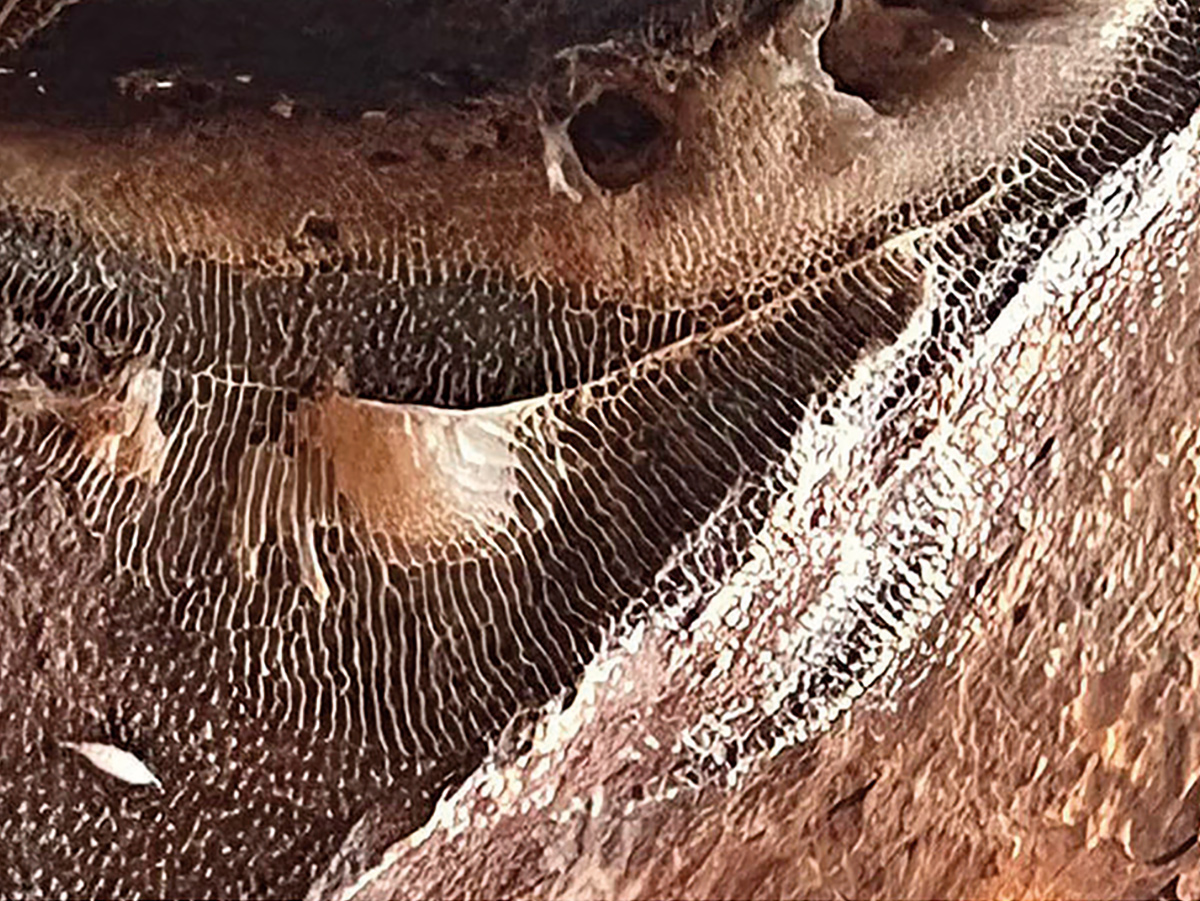
MEERT, J. G. et al. Gondwana Research. 2023The shape of a beehive resembled a 550-million-year-old animalMEERT, J. G. et al. Gondwana Research. 2023
In a 2020 article in Gondwana Research, researchers from the USA, India, and South Africa presented a rare fossil of Dickinsonia tenuis, which inhabited the region now comprising China, Russia, Ukraine, and Australia. Found on the ceiling of a cave in Bhopal, India, the fossil appeared to confirm that the supercontinent Gondwana, which included present-day South America, Africa, India, and Oceania, formed about 550 million years ago. But the finding was merely a scientific error, according to another paper published in Gondwana Research in February. After studying the fossil using techniques such as Raman spectroscopy and X-ray diffraction, researchers from the University of Florida, USA, and the University of Rajasthan, India, concluded that it was actually a hive made by giant honeybees (Apis dorsata) on the surface of the rock, which created an imprint similar to that of the primitive animal. There were structural similarities between the suspected D. tenuis fossil and the honey and pollen stocks of recently deteriorated bee nests. The rate at which the fossil degraded in just two years had already raised suspicions that it was not really set in stone. The authors of the original paper agreed with the new analysis.
Republish